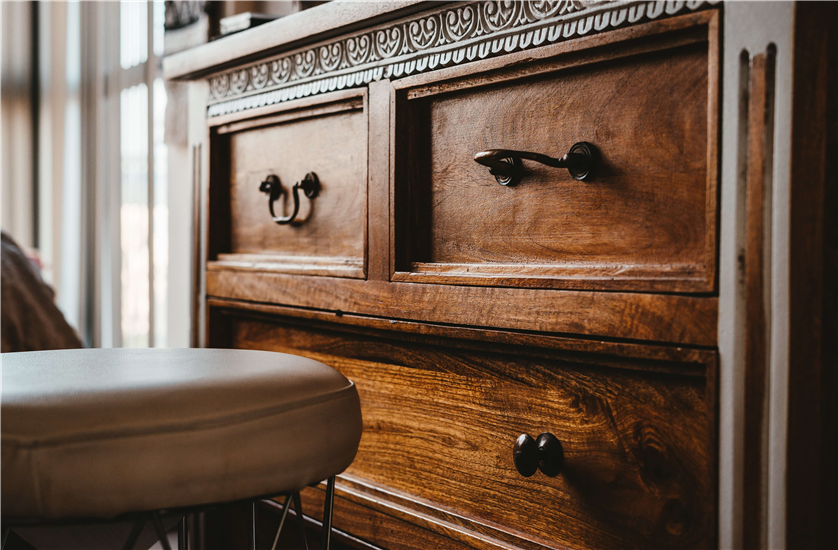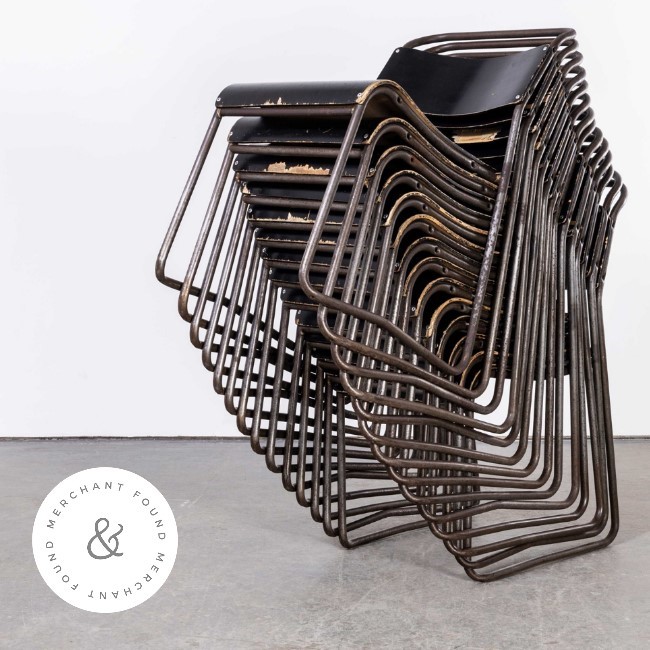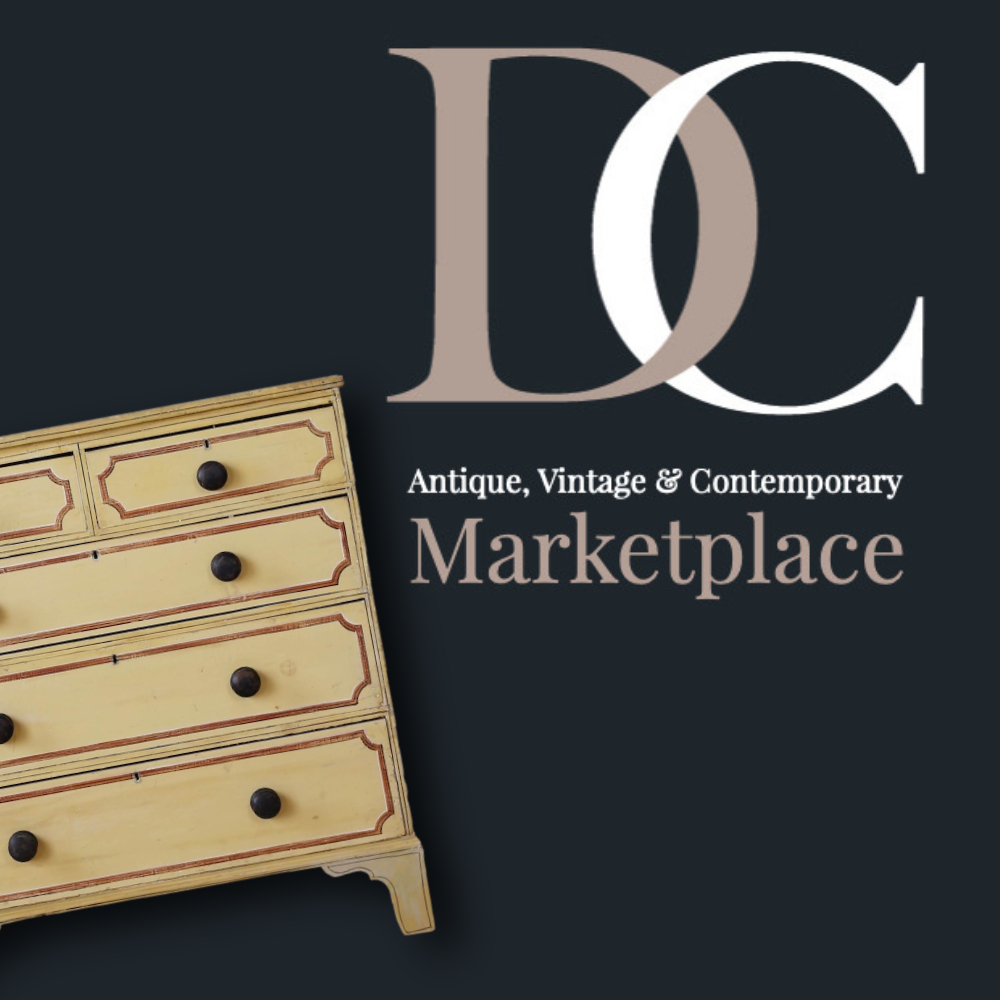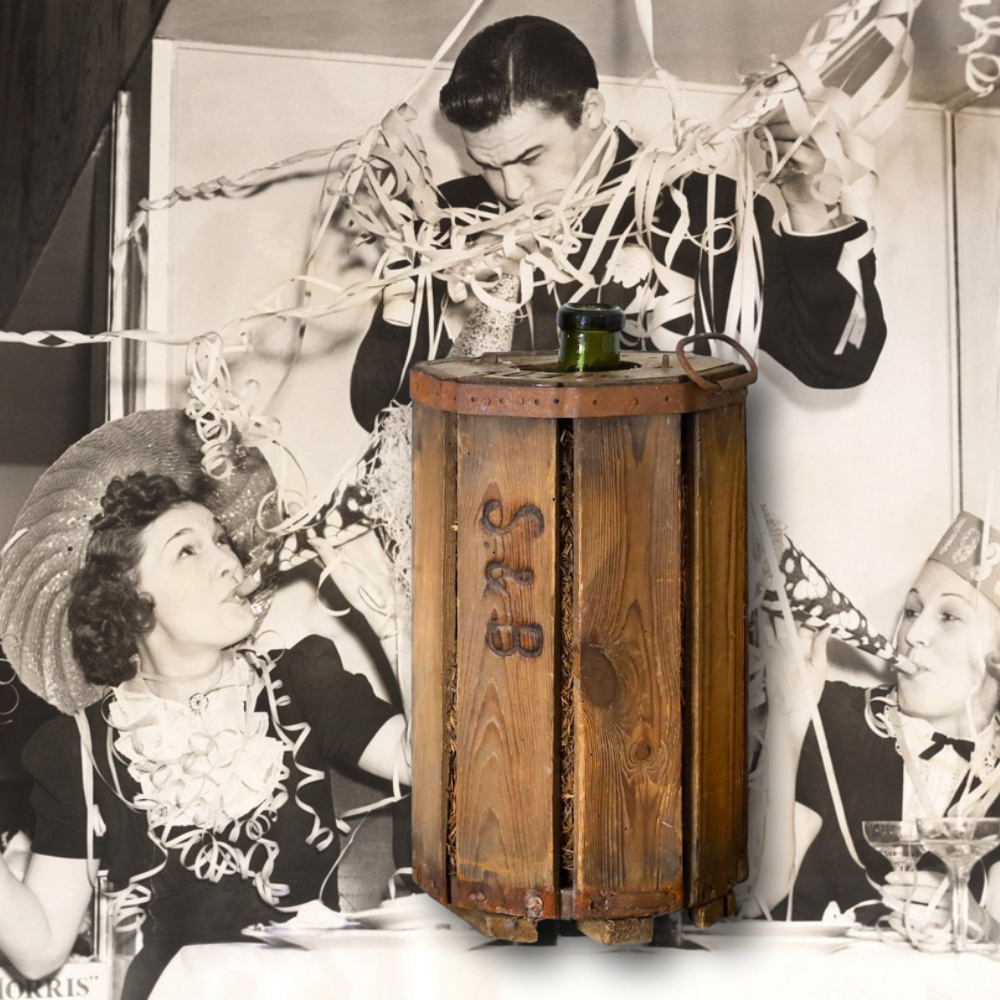
Veneer is an incredibly old technique used in furniture manufacture, dating as far back as 3000 BC in some countries. While veneer has only really been used in the UK since the middle of the 16th century, being popular in oak furniture made in the North of England, it has maintained its popularity due to the beautiful designs it helps create.
English veneered furniture often features geometric shapes – although veneer allows for more intricate patterns too – sawn from sycamore or holly, as well as darker woods like walnut and bog oak. Natural stains were often used to create rich colours and beautiful designs.
What Is Veneer In Furniture?
Veneer is made from thin slices of wood. It is often made of bark, which would be peeled from the trunk of a tree. In some cases, veneer is made by slicing large blocks of wood. These thin slices are then glued to a wooden surface to produce the veneer.
Marquetry is also a type of veneer, which is when small pieces of wood are cut from one block but installed on the furniture with the grain running in opposite directions in a geometric pattern. This allowed for images or designs to be created on the surface of furniture.
Veneer has been popular throughout the centuries as it allows for furniture to be made using beautiful wood that might have limited availability and so couldn’t be used throughout the full piece.
What Types of Veneer Cuts Are There?
There are a lot of different veneer cuts used on furniture, each of which creates a different look and effect. Popular veneer cuts on antique furniture include:
Feathered Veneer
This type of veneer is cut and laid at an angle to create a pattern similar to that of a bird’s feather. It is often used on high-quality furniture from the 18th and 19th Centuries, adding decoration to pieces like bookcases, cabinets and cupboards.
Oyster Veneer
Oyster veneer is very distinctive and was popular during the 17th century and early 18th century. It is created by slicing through a branch so attractive rings are visible. Usually cut from walnut and olive wood, oyster veneer is also often teamed with geometric lines inlays in different woods to create a stunning design.
Burr Veneer
A burr is caused on a tree trunk as a result of numerous growths. Often, burr clusters are found near the bottom of a tree and are generally only available in small sections. This type of veneer is very delicate and can become brittle over time but can be quite rare in certain types of wood.
Scarf Jointed Veneer
This type of veneer was used when it wasn’t possible to get a straight edge – such as when using small pieces of burr veneer – or if a straight edge wasn’t wanted as part of the design. With a scarf jointed veneer, a straight line could be cut along the quartered line but the joints of each connecting piece would be hidden to make it seem as though the veneer is one piece instead of made of several.
Curl Veneer
Curl veneers are cut from the fork of a tree at the point where the trunk divides. The result is a natural featuring effect that became highly sought after in woods like mahogany in the 18th and 19th centuries. It is commonly used for drawer fronts and furniture tops.
Segmented Veneer
This veneer method is used to create a sunburst pattern by wood that is cut into triangle shapes. Often, this type of veneer would feature two distinct types of wood laid in an alternating pattern. Segmented veneer was popular in the 19th century.
Book-Matched Veneer
Book-matched veneer means that two subsequent sheets of veneer are laid next to each other to create a counter pattern – similar to creating a butterfly print by folding a piece of paper. This was often done with larger veneer surfaces, such as tabletops or the fronts of bureaus.
Fiddle Veneer
Often used when crafting violins – which is where it gets its name from – fiddle veneer is incredibly distinctive. It has a telltale shape that runs at right angles from the grain and is often seen in mahogany and stained sycamore on furniture from the 18th century.






